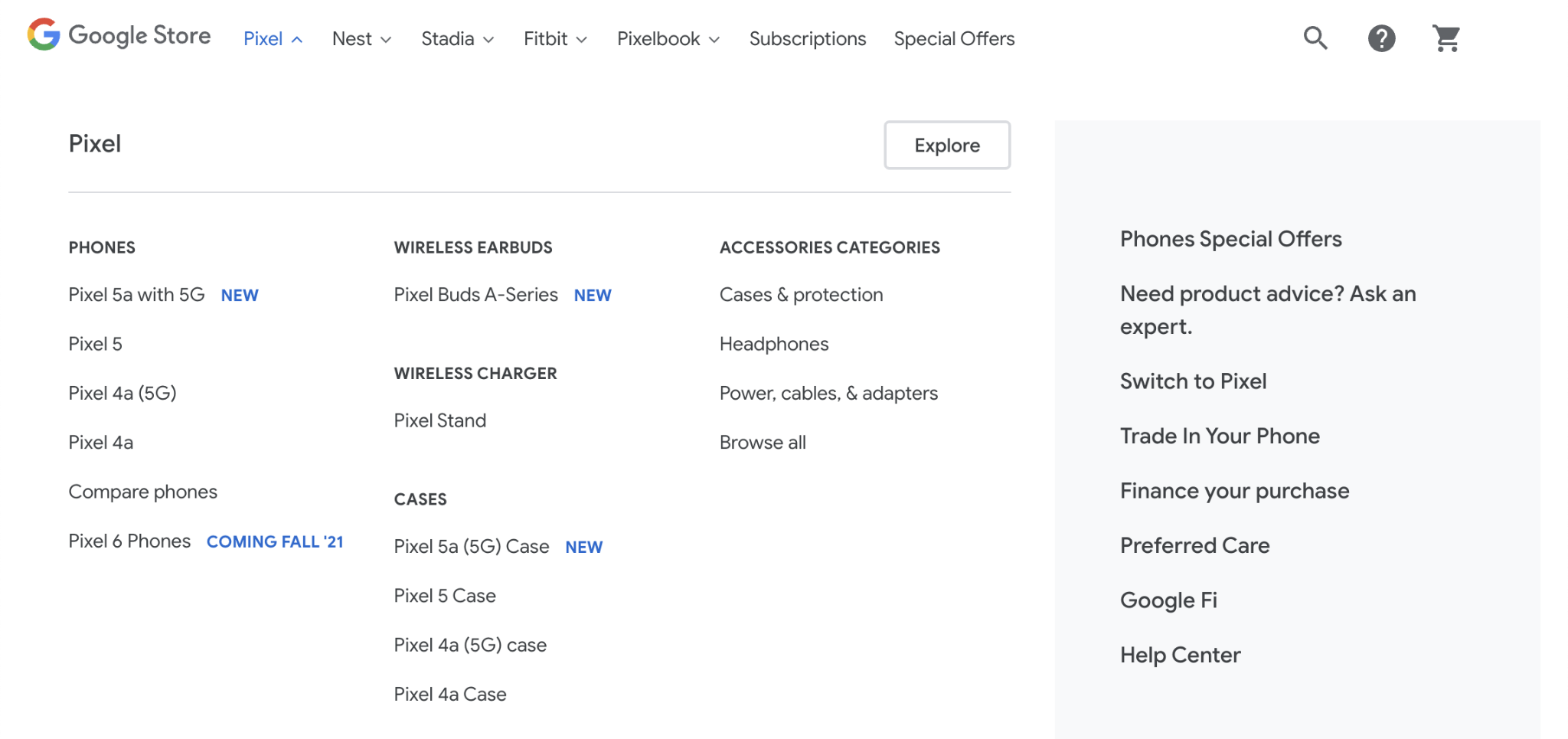協助 Google 瞭解您的電子商務網站結構
Google 會根據網頁連結分析網頁間的關聯,嘗試找出您網站上的最佳內容。這表示網站中的導覽結構 (例如選單和跨網頁連結) 可能會影響 Google 對網站結構的瞭解。
舉例來說,Google 會使用瀏覽某個網頁所需的連結數量以及連結至該網頁的連結數量,來推斷該網頁和網站上其他部分何者相對重要。如要進一步瞭解 Google 搜尋如何判斷網頁的重要性,請參閱 Google 搜尋的運作方式。
讓您的電子商務網站導覽結構更適合 Google 檢索器作業
為了協助 Google 找到您網站上的所有網頁,請務必遵循電子商務網站最佳做法,確保所有網頁都能透過網站導覽的連結存取。例如,您可以加入連結,讓選單能夠依序連至類別網頁、子類別網頁以及所有產品的網頁。此外,我們也建議您 加入結構化資料,這有助於 Google 瞭解網站上各網頁的用途,進而強化這個結構。

如果類別網頁無法直接連至該類別中的所有產品,Googlebot 可能無法只透過檢索作業就找到您所有的產品。這些產品或許能夠透過搜尋框找到,但卻無法透過類別網頁看到。一般來說,Googlebot 在檢索網站時不會透過搜尋框送出搜尋,因此強烈建議您為所有想要建立索引的產品建立連結。如果無法連結至所有網頁,請使用 sitemap 或 Google Merchant Center 動態饋給,這些資源能夠涵蓋檢索器找不到的網站網頁連結。
為確保 Googlebot 能夠正確找到連結,請在建立連至其他內容的連結時使用 <a href> 標記。請不要在其他 HTML DOM 元素上使用 JavaScript 事件進行導覽。如要進一步瞭解 JavaScript 和網頁內容建立索引作業,請參閱瞭解 JavaScript 搜尋引擎最佳化 (SEO) 基礎知識一文。
宣傳您最熱銷的類別或產品
Google 通常不會透過網址結構來瞭解網站結構,而是會分析網頁之間的關聯性,以此推斷網站上各個網頁何者較為重要。一般而言,越多站內網頁連至某個網頁,該網頁相對網站其他部分就越重要。
舉例來說,如果您有熱銷的明星產品,可以考慮從首頁或其他內容 (例如站內網誌文章或電子報等) 建立連結,連至這項產品,藉此讓 Google 瞭解這項產品對您網站的重要性。
總歸來說,Google 致力於協助使用者尋找所需內容。我們對於電子商務 SEO 作業的最根本建議,是創造實用又有趣,且對使用者來說有價值的內容。
如要進一步瞭解,請參閱「管理多面向導覽網址的檢索」一文。
